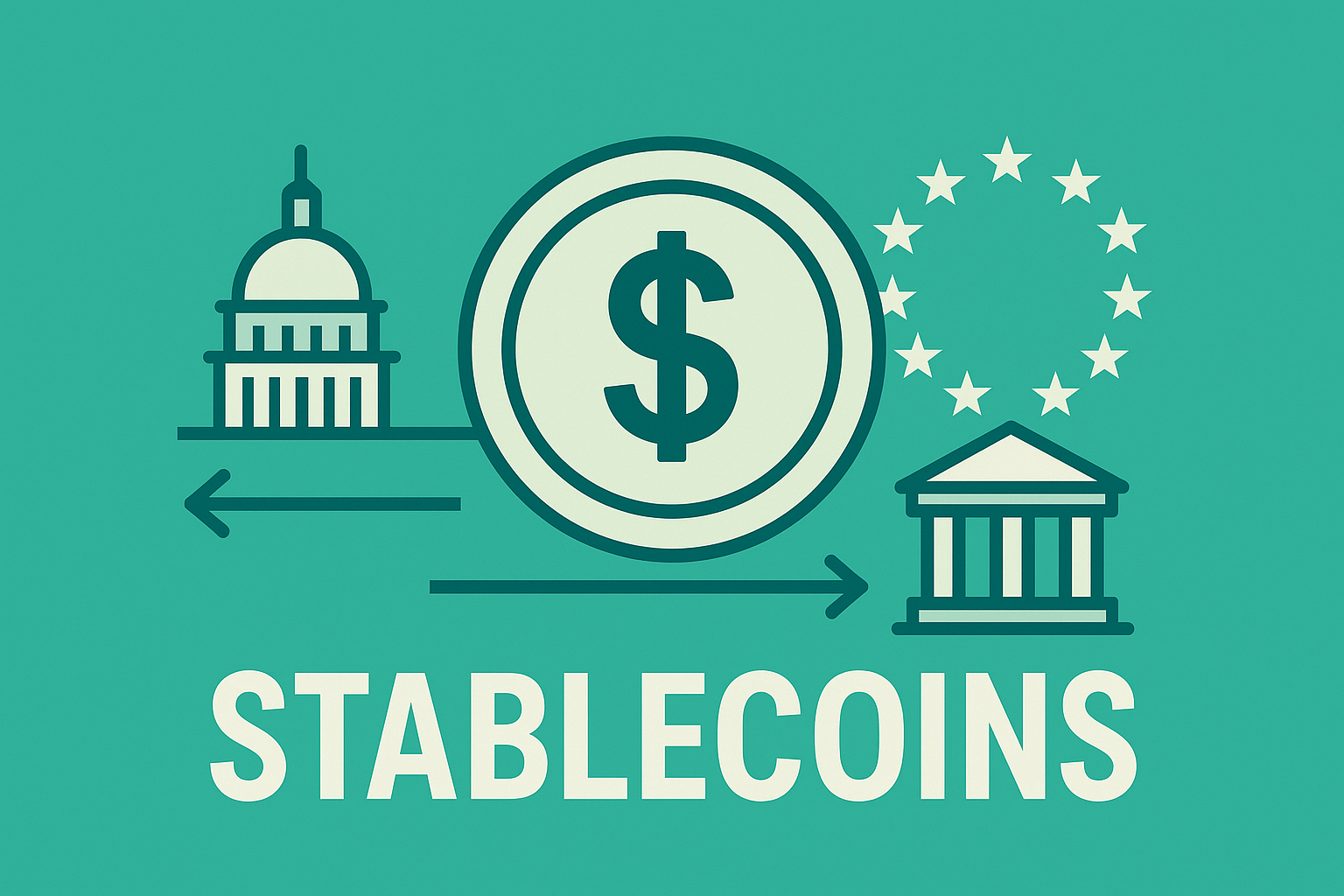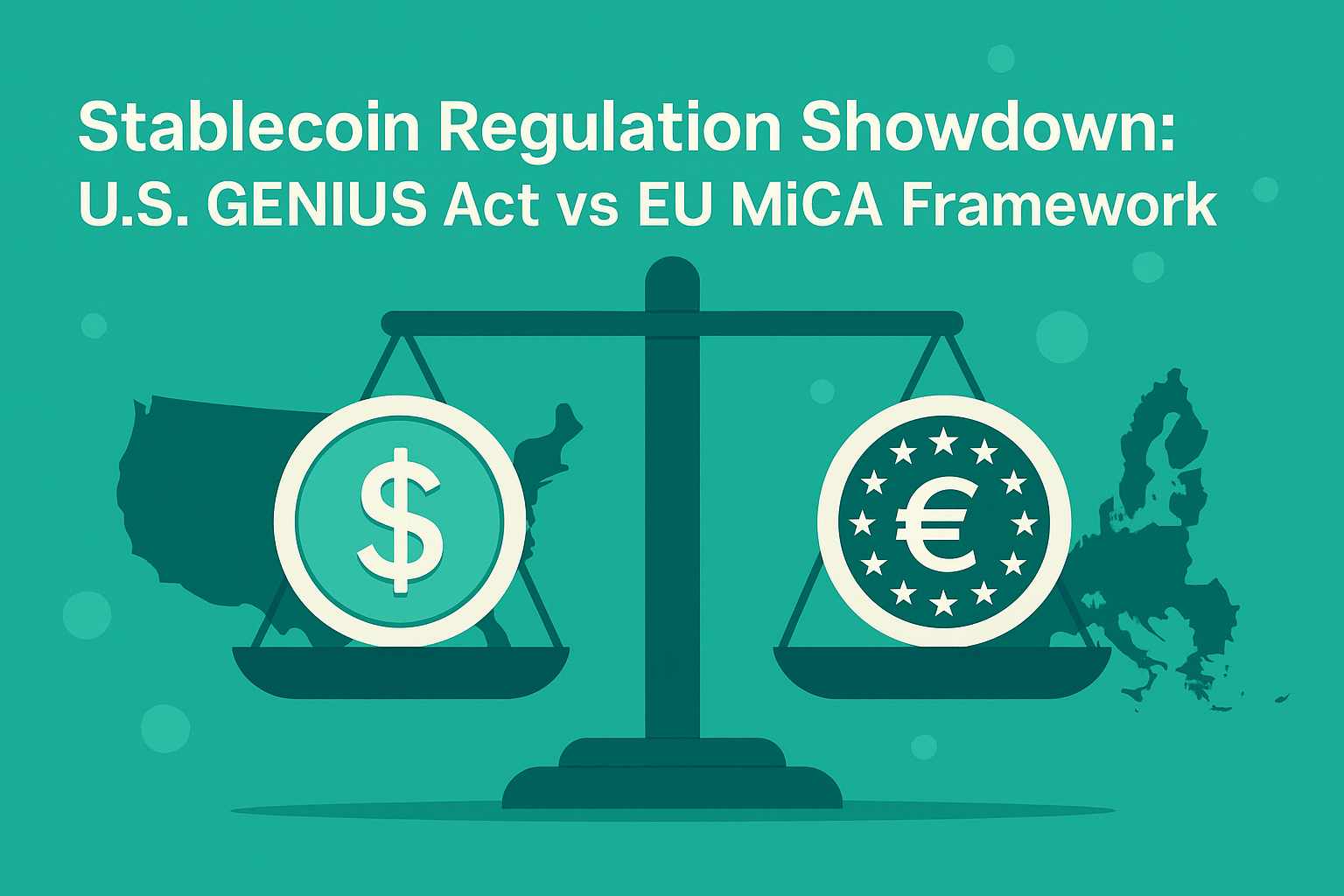Wrote By:Global Economist 2025.10
Introduction
Stablecoins—digital tokens pegged to stable assets like the U.S. dollar—are no longer niche instruments of crypto enthusiasts. They have become central to the debate over the future of money, payments, and regulation. In 2025, the U.S. and Europe are taking decisive steps to formalize frameworks, while geopolitical tensions highlight both the promise and the risks of this technology.
U.S. Regulation: From Uncertainty to Implementation
In July 2023, Congress passed the GENIUS Act, the first comprehensive federal law on stablecoins. The law requires 100% reserve backing and monthly public disclosure of asset composition, aiming to reduce opacity and bolster investor confidence. The Treasury is now drafting detailed rules, with regulators focusing on bankruptcy procedures, reporting obligations, and supervision of issuers. This signals a transition from legal recognition to practical enforcement.
Visa’s recent pilot for cross-border transfers using stablecoins—without pre-funding requirements—demonstrates how regulation and private-sector innovation are converging. Such models could reduce costs in B2B payments and increase demand for short-term U.S. Treasuries, linking stablecoins more closely to sovereign debt markets.
Europe’s Stricter Path under MiCA
The EU’s Markets in Crypto-Assets (MiCA) regulation came into force with ambitious goals, but risks remain. The European Systemic Risk Board (ESRB) has warned about multi-issuer models and proposed stronger safeguards, particularly around liquidity management and redemption guarantees.
A key challenge ahead is equivalence: determining whether non-EU stablecoin issuers can meet European standards. The U.K., meanwhile, is pursuing its own approach, aiming to regulate stablecoins with the same rigor as traditional money markets.
Geopolitical and Market Risks
Stablecoins are also entangled in geopolitics. Russian ruble-pegged tokens have been used to circumvent sanctions, drawing international scrutiny. At the same time, the rise of interest-bearing stablecoins has sparked fears of destabilizing banks by competing directly with deposits.
These developments reveal a double edge: stablecoins may reinforce the U.S. dollar’s global role, yet they also open doors for sanction evasion and financial fragmentation.
Key Challenges Ahead
Looking forward, regulators and market participants face four critical tests:
- Cross-border recognition of rules (especially EU equivalence decisions).
- Detailed U.S. implementation, including failure resolution frameworks.
- Interest-bearing tokens, which may blur lines between money market funds and stablecoins.
- Global sanction coordination, ensuring uniform compliance mechanisms.
Practical Takeaways for Issuers and Investors
- Issuers and intermediaries should prepare for dual compliance with both U.S. and EU frameworks.
- Treasury managers should design portfolios around ultra-short-term Treasuries to ensure liquidity and regulatory approval.
- Risk managers must strengthen KYC and “travel rule” processes to mitigate sanction-evasion risks.
Conclusion
Stablecoins are moving from speculative instruments into the heart of global finance. The U.S. and Europe are setting the tone, but their choices will resonate far beyond their borders—affecting emerging markets, payment networks, and even the geopolitics of money. Whether stablecoins stabilize or destabilize the system will depend on how effectively regulators, issuers, and global institutions manage this pivotal transition.


